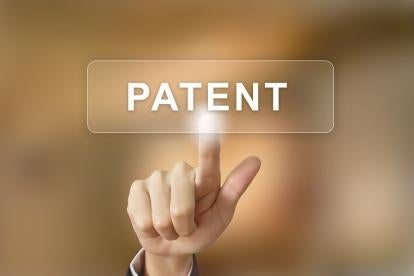The original Federal Circuit decision in Novartis Pharms. Corp. v. Accord Healthcare, Inc. was on the list of “written description” cases I covered in several conference programs this spring. It was interesting because written description support was found for a negative limitation that was not mentioned in the application, based in part on a prophetic example that did not include the step excluded from the claims. Now that the panel has granted rehearing and reached a different conclusion, I want to make sure I set the record straight here as well.
The Patent At Issue
The patent at issue was U.S. Patent No. 9,187,405, which was listed in the Orange Book for Novartis’s GILENYA® fingolimod product, which is approved for the treatment of relapsing forms of multiple sclerosis. Claim 1 is reproduced below, with emphasis showing the negative limitation at issue:
- A method for reducing or preventing or alleviating relapses in Relapsing-Remitting multiple sclerosis in a subject in need thereof, comprising orally administering to said subject 2-amino-2-[2-(4-octylphenyl)ethyl]propane-1,3-diol, in free form or in a pharmaceutically acceptable salt form, at a daily dosage of 0.5 mg, absent an immediately preceding loading dose regimen.
The prophetic example described a clinical trial as follows:
20 patients with relapsing-remitting MS receive said compound at a daily dosage of 0.5, 1.25, or 2.5 mg p.o. The general clinical state of the patient is investigated weekly by physical and laboratory examination. Disease state and changes in disease progression are assessed every 2 months by radiological examination (MRI) and physical examination. Initially, patients receive treatment for 2 to 6 months. Thereafter, they remain on treatment for as long as their disease does not progress and the drug is satisfactorily tolerated.
In ANDA litigation proceedings, the district court found that the patent was not invalid for lack of written description. Defendants HEC Pharm Co., Ltd., and HEC Pharm USA Inc. appealed. The appeal was heard by Chief Judge Moore and Judges Linn and O'Malley.
The Original Panel Decision
Judge O'Malley authored the original opinion that affirmed the district court decision. That opinion emphasized that there is no heightened written description requirement for negative claim limitations and that the same fact-based inquiry is followed to assess compliance:
As with all other limitations, the negative limitation here must be accompanied by an original disclosure that conveys to a person of ordinary skill that the inventor was in possession of the claimed invention.
Applying that legal principle, the original opinion cited expert testimony to the effect that, if a loading dose was required, it would have been expected to be described in the prophetic example. The original majority found that and other testimony sufficient to support the district court’s conclusion that the "EAE model and the Prophetic Trial ... both indicate to a person of ordinary skill that the claimed invention did not include the administration of a loading dose.”
The Decision On Rehearing
Chief Judge Moore (who dissented from the original decision) authored the opinion on rehearing, which Judge O’Malley joined, but from which Judge Linn dissented.
The opinion on rehearing cites Ariad for the principle that “the hallmark of written description is disclosure,” and repeats a statement from Chief Judge Moore’s original dissenting opinion:
Silence is generally not disclosure.
With regard to negative claim limitations, the opinion states that written description support can be found when the “the specification describes a reason to exclude” the element at issue. The opinion cites decisions where support for negative claim limitations was found based on statements regarding disadvantages of the element or based on statements distinguishing the element from alternatives.
The opinion on rehearing does recognize limited circumstances under which “written description could be satisfied despite the specification’s silence,” setting a high bar of inherency:
[I]t is possible that the written description requirement may be satisfied when a skilled artisan would understand the specification as inherently disclosing the negative limitation. For example, if the record established that in a particular field, the absence of mention of a limitation necessarily excluded that limitation, written description could be satisfied despite the specification’s silence.
Reviewing the record through this lens, the majority on rehearing found “no evidence that a skilled artisan would understand silence regarding a loading dose to necessarily exclude a loading dose.” Thus, on rehearing, the Federal Circuit vacated its prior decision and reversed the district court’s judgment that had upheld validity.
Judge Linn’s Dissenting Opinion On Rehearing
Judge Linn dissented from the majority opinion on rehearing. As explained in the opening paragraph of his dissent, he believes the majority’s requirement for “a showing that the negative limitation in question was ‘necessarily excluded’” improperly imposes a heightened written description standard for negative limitations.
The Case For Negative Limitations
While some patent applications are drafted with specific exclusions in mind, a need for a negative claim limitation often does not arise until the application is undergoing prosecution. For example, an unexpected prior art publication may be cited that requires an element the invention does not. Inventors may be frustrated to learn that the fact the element is not mentioned in their application may not provide sufficient basis for expressly excluding it from the claims. Sometimes a carefully placed “consisting of” can be an alternative to a negative limitation, but applicants usually are reluctant to use such “closed” language unless absolutely necessary.




 i
i

